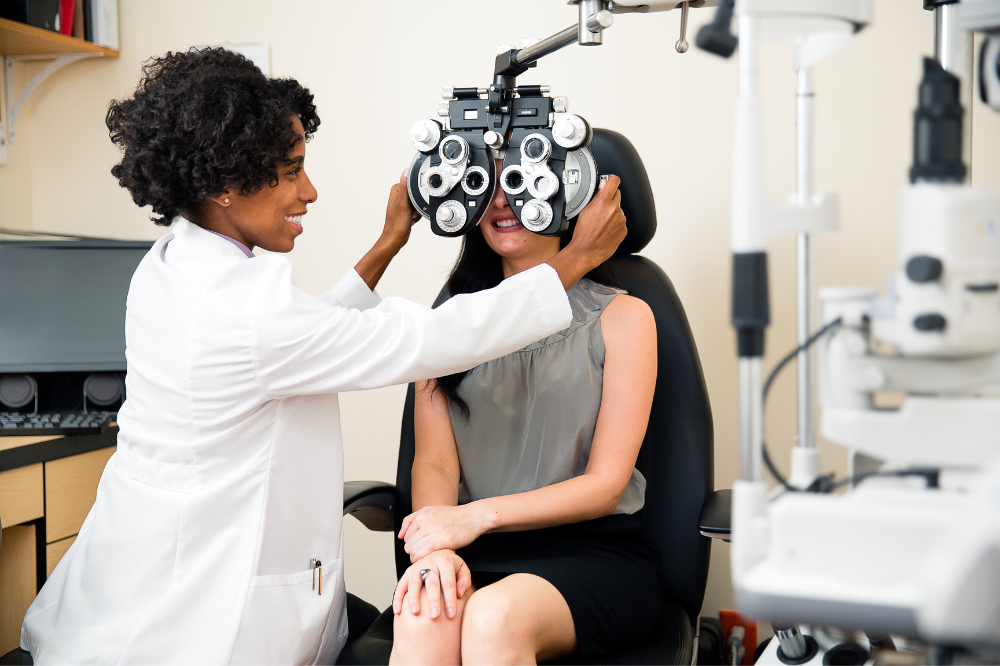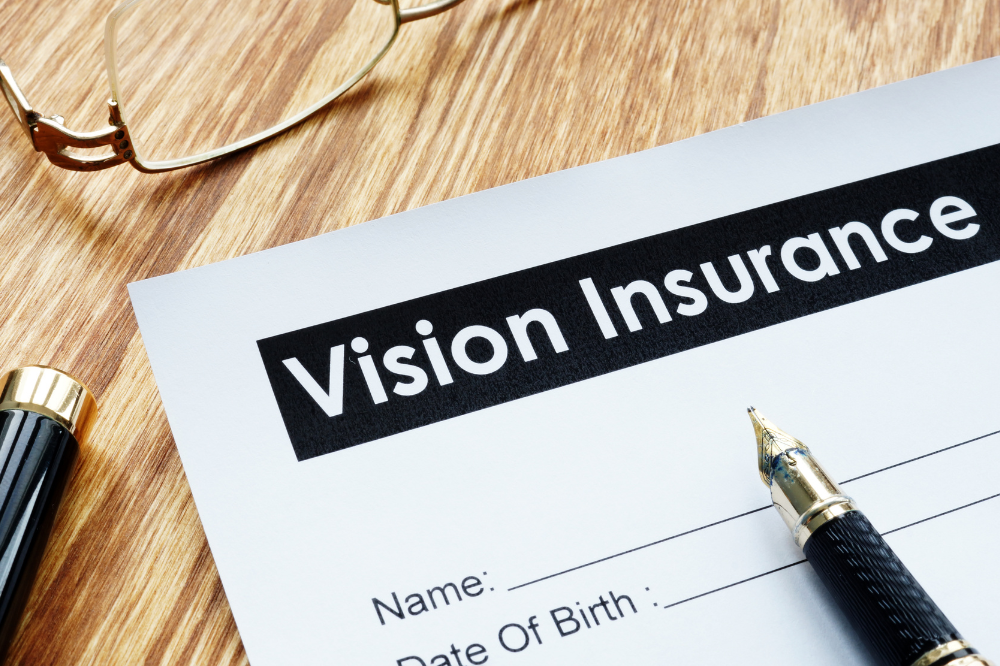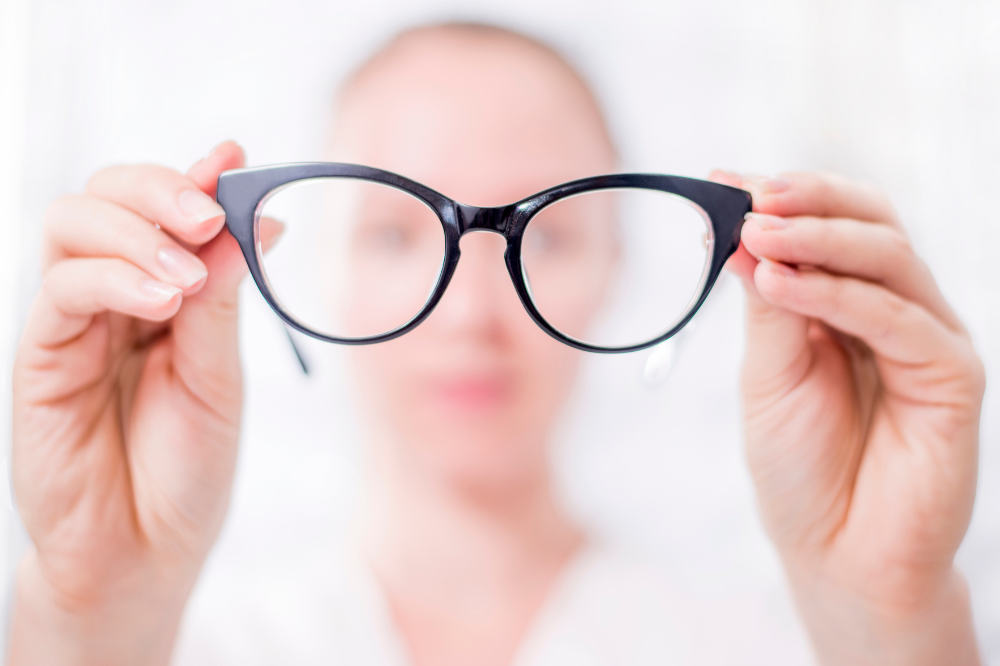Eye examination in the US - An Overview
Eye examination in the United States is considered an important part of preventative healthcare. A comprehensive eye exam can help detect serious health problems, such as diabetes, high blood pressure, and even some forms of cancer. It is recommended that adults have a comprehensive vision examination at least once every two years to check for age-related eye diseases.
Children should have a vision examination at least once a year. During a comprehensive exam, your doctor will check your vision. He or she will also ask about your medical history and any medications you are currently taking. You may be asked to read an eye chart or complete other vision tests. Your eyes will also be dilated so that your doctor can get a better look at the back of your eyes. After your exam, your doctor will discuss the results with you and answer any questions you may have. If you have a vision problem, he or she will develop a treatment plan that is right for you.
If you have a health condition that could affect your eyes, such as diabetes, high blood pressure, or glaucoma, your doctor will closely monitor your condition and make treatment recommendations. In some cases, you may be referred to a specialist for further evaluation and treatment.
The cost of an exam can vary depending on several factors, such as your location, the type of provider you see, and whether or not you have insurance. Many insurance plans cover at least a portion of the cost of an eye exam. If you think you may have a vision problem, or if you have any concerns about your eye health, make an appointment to see your doctor. Early detection and treatment of eye problems can help preserve your vision and maintain your overall health.
What is a comprehensive eye exam?
It is a thorough evaluation of your vision and eye health. During the exam, your doctor will ask about your medical history and symptoms and perform a series of tests to assess your visual acuity, eye movement and coordination, pupil function, ocular health, internal eye pressure, and eyesight. They will also check for signs of common eye conditions and diseases, such as glaucoma, cataracts, and macular degeneration. The results of your exam will help your doctor determine the best course of treatment to protect your vision.
Eye exams are important for maintaining good eye health

Many common eye problems can be detected early and treated effectively if caught early enough. That’s why it’s important to have regular eye exams, even if you think your vision is fine.
During an eye examination, your doctor will check your eyes for common problems, such as nearsightedness, farsightedness, astigmatism, and glaucoma. He or she will also check your eyes for signs of other, more serious problems.
Your doctor will use several different tests and instruments during your eye exam. These may include a visual acuity test, a refraction test, an eye muscle test, and a slit lamp examination.
A visual acuity test measures how well you see at various distances. A refraction test determines whether you need corrective lenses. An eye muscle test checks for weakness or paralysis of the eye muscles. A slit lamp examination allows your doctor to get a close look at the structures inside your eyes.
After your examination, your doctor will discuss the results with you and let you know if you have any problems that need to be treated. If you do need treatment, he or she will explain what options are available and help you choose the best one for your needs.
Does insurance cover comprehensive eye exams?
Yes, insurance typically covers comprehensive eye examinations. However, it is always best to check with your specific insurance provider to verify coverage. Most vision plans will cover the cost of a comprehensive eye exam at least once every 12 months. Some insurers may require that you see a specific doctor or visit an in-network provider for your exam to be covered.
How much does an eye exam cost without insurance coverage?
The cost of an eye exam can vary depending on several factors, including whether or not you have insurance coverage. Without insurance, an eye exam can cost anywhere from $50 to $200. However, if you do have insurance, your out-of-pocket costs for an exam are typically much lower. For example, if you have insurance through Medicare, you will only be responsible for a small copayment for your exam. Similarly, if you have private health insurance, your insurer may cover the entire cost of the exam, or you may only be responsible for a small co-pay. If you are unsure about your coverage or what your out-of-pocket costs may be, you can always call your insurance company or the eye doctor’s office to get more information.
A comprehensive eye exam, which may be necessary if you are experiencing vision problems, can cost between $100 and $300.If you do not have insurance, there are a few ways to reduce the cost of an exam. Many vision care providers offer discounts for cash payments. You can also check with your local community health center or contact the American Optometric Association to find participating optometrists in your area who offer reduced-fee exams.
Vision insurance is important for maintaining healthy eyesight

Vision insurance can be used to help offset the cost of contact lenses or glasses. Many people choose to purchase vision insurance through their employer, but it is also available as a standalone policy.
There are a few things to consider when purchasing vision insurance. First, make sure you understand the different types of coverage available. You will need to decide whether you want comprehensive coverage or just basic coverage. Comprehensive coverage typically covers more than just routine eye examinations and glasses or contact lenses. It may also cover things like vision therapy, which can be expensive.
Second, you will need to decide whether you want a policy that covers pre-existing conditions or not. Pre-existing conditions are any medical conditions that you already have when you purchase the policy. If you do not have any pre-existing conditions, then you will likely be able to get a health insurance policy with better benefits.
Third, you will need to decide how much coverage you need. The amount of coverage you need will depend on a few factors, such as your age, health, and lifestyle. If you are young and healthy, you may not need as much coverage as someone who is older or has health problems.
Finally, you will need to decide whether you want a policy that has a deductible or not. Consider your needs and choose a policy that gives you the right amount of coverage A deductible is the amount of money that you will have to pay out of pocket before your insurance company starts to pay for your covered expenses.
Benefits of having vision insurance plans
1. Better eye health:
Having vision insurance can help you get regular checkups and low-cost eye exams for potential problems, which can help keep your eyes healthy.
2. Caught early, serious conditions are easier to treat:
Many eye conditions, if caught early enough, can be treated successfully. However, if they progress too far before being detected, they may be much more difficult (and expensive) to treat.
3. Save money on prescription eyewear:
Routine eye exams can help ensure that your prescription is up to date, so you don’t have to pay as much for new prescription eyeglasses or contact lenses.
4. Discounts on vision correction surgery:
Some vision insurance providers offer discounts on vision correction surgery, such as LASIK.
5. Access to a network of providers:
Vision insurance usually has a network of eye doctors that you can see for discounted rates. This can save you money on your out-of-pocket costs.
6. No need to worry about pre-existing conditions:
Unlike some other types of insurance, vision insurance does not generally exclude coverage for pre-existing conditions.
7. Lower deductibles:
Many vision insurance has lower deductibles than medical insurance plans, so you may end up paying less out of pocket.
8. Free or low-cost annual vision exam:
Most vision insurance covers the charges of one exam per year. This can save you hundreds of dollars if you would otherwise have to pay out of pocket.
9. Free or discounted vision correction devices:
Many vision insurance offers free or discounted rates on eyeglasses and contact lenses.
10. Peace of mind:
Knowing that you have vision insurance can give you peace of mind in case something happens to your eyesight. This can help you stay focused on other important things in your life.
Low-cost eye care services in the US

In the United States, several organizations provide low-cost services for routine eye care. Some of them are listed below:
New eyes
It is a non-profit organization that provides free eye exams and glasses to eligible low-income individuals. If you’re looking for quality and affordable eye care, look no further than New eyes. Their experienced and caring staff will work with you to ensure that you get the best possible care for your needs. They offer a variety of services including:
- Eye exams
- Glasses and contact lens fittings
- Treatment for eye conditions and diseases
- Emergency eye care
VSP eyes
VSP is a vision service plan that offers discounts on eye exams and glasses to members. VSP Eyes of Hope is a program that provides free eye care and eyewear to both adults and children who do not have health insurance and who have a low income. The program offers comprehensive eye exams, as well as free glasses or contact lenses for those who need them. It also provides free vision screenings for children, which can help to identify potential problems early on. In addition, the program offers discounts on eye exams and eyewear for those who do not qualify for free services.
Eyecare America
Eyecare America is a non-profit organization that provides free eye exams and glaucoma screenings to eligible individuals. EyeCare is a nonprofit organization that partners with over 5,500 volunteer ophthalmologists to provide eye care at little or no money for 2 million patients. They have two programs: The Seniors Program which offers screening exams and one year’s worth of follow-up services on any conditions diagnosed during the initial visit; while Glaucoma treatments can be delivered through their specialized glaucomatous program to ensure optimal results!
Sight for Students
Sight for Students is a program that provides free eye exams and glasses to eligible low-income students. Several state and federal programs provide financial assistance for eye care services.
How to find affordable eyeglasses and contact lenses without insurance coverage?
If you don’t have insurance coverage for eyeglasses or contact lenses, there are still several ways to find affordable options. One way is to check out Walmart Vision Center or Sam’s Club Optical departments. These stores typically offer competitive prices on a variety of brands.
Another option is America’s Best, which has a large selection of contact lenses and offers discounts for members. Don’t forget to check retailers like America’s best, which offer a wide variety of styles at very reasonable prices. With a little bit of research, you should be able to find the perfect pair of glasses or contact lenses without breaking the bank.
What are some tips for reducing the cost of an eye exam?
1. Schedule an appointment with your doctor for a comprehensive exam at least once every two years.
2. Many insurance plans cover the fee of an exam, so check with your insurance provider to see if you are eligible for coverage.
3. Some employers offer insurance plans that can help offset the amount of an exam.
4. Many community health centers offer free or cheap comprehensive eye examinations.
5. Some colleges and universities offer free comprehensive vision exams for students.
6. The American Academy of Ophthalmology offers a program called EyeCare America that provides free or cheap comprehensive eye exams for eligible seniors.
7. The United States Department of Veterans Affairs provides free vision exams for eligible veterans.
8. Some optometrists and ophthalmologists offer discounts for patients who pay cash for their exams.
9. Some eye care providers offer discounts for patients who purchase a package of services, such as glasses, and contact lenses.
10. Many retailers offer coupons or discounts on the amount of a vision exam. Be sure to ask about discounts or promotions when scheduling your appointment.
How often it is recommended to visit an eye doctor?

For most people, it is recommended to see an eye doctor at least once every two years. However, if you have a family history of eye problems or are at risk for other health conditions that can affect your eyesight, you may need to see more frequently. If you are experiencing any changes in your vision or having any problems with your eyes, be sure to see an eye doctor as soon as possible.
From where to get an eye exam for free?
There are a few options available for those who are looking for free or less costly eye care. One option is to contact your local Department of Health and Human Services office to see if they offer any free or cheaper services. Another option is to search for free or cheap clinics in your area that offers vision care. You can also check with your local Lions Club, as they sometimes offer free eye exams. Finally, you can contact your state’s Department of Education to see if they have any programs that offer free eye assessments. No matter which option you choose, be sure to do some research to ensure that you are getting the best possible care.
What are some common vision problems that can be treated with eyeglasses or contact lenses?
Nearsightedness, or myopia, is a common vision problem that can be treated with eyeglasses or contact lenses. With nearsightedness, close objects appear clear, but distant objects appear blurry.
Farsightedness, or hyperopia, is another common vision problem that can be treated with eyeglasses or contact lenses. With farsightedness, distant objects appear clear, but close objects appear blurry. Astigmatism is another common vision problem that can be treated with eyeglasses or contact lenses. Astigmatism occurs when the eye does not focus light evenly on the retina, resulting in blurred vision.
FAQs
Some commonly asked questions about eye exams without insurance are:
How much does it cost at Walmart to have your eyes checked?
The average cost of an exam at Walmart is $84. However, this price may vary depending on the location and type of examination.
How much is an eye exam at America’s Best?
The cost of an exam at America’s Best can vary depending on several factors, but typically ranges from about $50 to $ 200. Some insurance plans may cover part or all of the cost of an exam, so it is always best to check with your particular insurance provider to see if you have coverage.
How much do glasses normally cost without insurance?
The average price for a basic pair of eyeglasses is about $200. More advanced eyeglasses, such as those with special tints or coatings, can cost upwards of $500. Prices will also vary depending on the retailer. Discount stores such as Walmart and Target typically sell glasses at lower prices than private optometrists or eyeglass specialty shops.
Can you insure your vision?
Yes, you can ensure your vision. Many insurance companies offer vision insurance. You can also get a vision plan through your employer. The cost of the insurance will depend on the company you choose and the coverage you select.
Which companies provide vision insurance in the US?
There are quite a few companies that provide vision insurance in the United States. Some of the most popular include VSP (Vision Service Plan), Davis Vision, and EyeMed. These companies all offer a variety of different vision plans that can be tailored to meet your specific needs and budget.
Where can I get an eye examination for the lowest price in the US?
In the United States, there are several different places where you can get an eye examination for a low price. Sam’s Club and Walmart both offer eye examinations for a very reasonable price. In addition, Eyecare America provides free eye examinations to eligible individuals. Finally, the American Optometric Association offers discounts on eye examinations through its “Access to Care” program. With so many options available, there is no excuse not to get your eyes checked regularly!
Bottom Line
Eye exams are an important part of maintaining your overall health and well-being. In the US, most people do not have vision insurance, which can make it difficult to afford regular eye examinations. However, there are ways to find affordable eye care without insurance coverage. Our blog provides tips on how to reduce the cost of an eye exam as well as where to get one for free. Be sure to read our other blogs for more information on eyeglasses, contact lenses, and comprehensive eye examinations.











